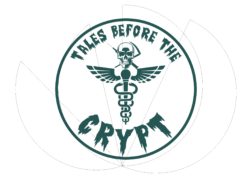I have been hard on my knees and other weight bearing joints. Years of athletics from Football, basketball, skiing, career back breaking labor and the like. I have witnessed what I refer to as a “Rite of Passage” These are commonplace surgeries such as knee and hip replacement. I have also seen, as a Geriatrician, the numerous complications and difficulties some folks have during and after these surgeries. Infection, sepsis, life long antibiotic use, pain and sometimes debility. The rehab alone involves 3 months of strenuous Physical Therapy and a year of waiting to see what the Patient’s “new normal” will be. These surgeries are not performed to restore previous ability in most cases, but to prevent the pain from the “bone on bone” arthritis, which is off the scale.
My goal is to document my own process, from start to finish over the next several months as I try to avoid the total knee replacement.
My right knee hurts most days. Not debilitating but the usual ache when you move from a seated position, climb or descend stairs or try to carry heavy items. Last year I had a partial posterior cruciate ligament tear and also meniscus tears that were repaired by arthroscopy. During this procedure, the torn and damaged tissue is essentially shaved off and removed, leaving you with less of what you once had. Steps closer to the total knee replacement.
I still have fairly good joint space (the space you can see between the upper and lower bones of your leg at the knee joint) during weight bearing x ray studies. This is important because once you get to the point where there is no cartilage and the bones rest on each other, the knee replacement is your best and only option.
Because cartilage has little if any direct blood supply it repairs slowly if at all, relying on absorption from surrounding materials in the knee joint. Newly discovered therapy that has been researched over the past 20 or so years have been biologics that not only stimulate your own process of healing, but accelerate it and form new tissue to preserve remaining cartilage, ligaments and have been shown to improve regeneration of the same tissues. The studies are available on the Web, are numerous and mostly complicated to understand but the bottom line is, the promise is there.
It is very important to research and choose the biologics and the folks best to apply this therapy. I have chosen the Riordan Medical Institute in Dallas Texas after doing quite an in depth study myself. I would also recommend reading the founder’s book Stem Cell Therapy A Rising Tide. This book is well written so the layperson can understand this therapy. Also presented are several case histories of actual Patients and their own personal journeys and experiences with this treatment.
At the writing of this Post I have just returned from my trip back home and I am doing well so far. The pain in my knee is no worse or less than what I had previous. This therapy takes time, and in my subsequent Posts I will explain why.
